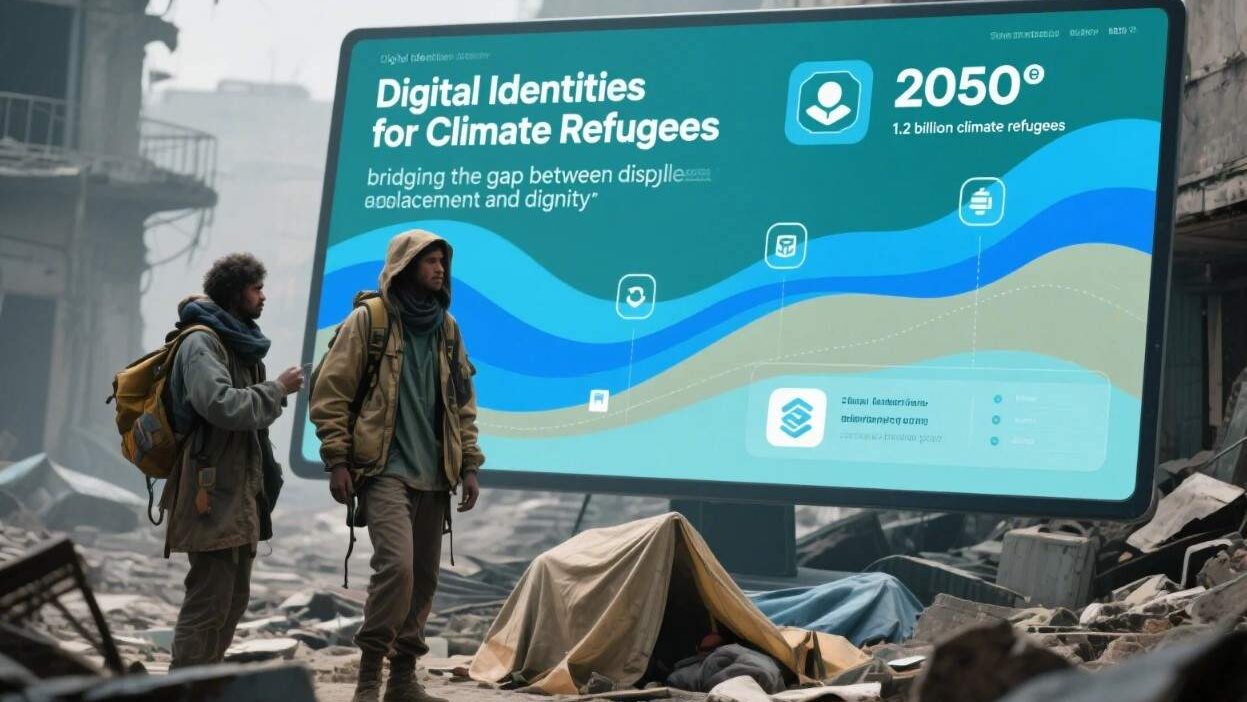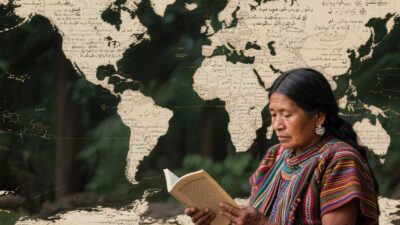Bridging the Gap Between Displacement and Dignity
The Invisible Crisis of Climate Displacement
Climate change is reshaping the planet at an unprecedented rate. Rising sea levels, relentless droughts, and intensifying storms are displacing millions of people annually—by 2050, the World Bank estimates 1.2 billion people could be climate refugees. These individuals, often fleeing flooded homes, barren farmland, or uninhabitable cities, face a dual crisis: losing their physical homes and their legal and social identities.
Traditional identification systems—paper passports, national ID cards—are ill-equipped to serve this mobile, vulnerable population. Lost or damaged documents, bureaucratic hurdles, and cross-border recognition issues leave climate refugees in a limbo, unable to access aid, healthcare, or employment. Enter digital identities: secure, portable, and resilient digital representations of identity that could redefine how climate refugees navigate displacement. This article explores how digital identities are emerging as a lifeline for climate refugees, their potential to empower, and the challenges to widespread adoption.
What Are Digital Identities? A New Frontier in Identification
Digital identities are secure, digital records of a person’s identity, often anchored to blockchain, biometrics, or decentralized technologies. Unlike physical IDs, they are:
- Portable: Stored on devices (phones, tablets) or cloud platforms, accessible anywhere with internet.
- Immutable: Tamper-proof, thanks to cryptographic hashing or blockchain ledgers.
- Interoperable: Designed to work across borders, sectors, and institutions (e.g., banks, hospitals, governments).
For climate refugees, digital identities could replace fragile paper documents with a single, verifiable source of truth—critical for accessing services in unfamiliar regions.
Why Climate Refugees Need Digital Identities
Climate displacement amplifies existing vulnerabilities, and traditional IDs fail to address these gaps:
1. Legal Invisibility
Many climate refugees lack formal documentation (e.g., birth certificates, passports) due to displacement, poverty, or statelessness. Without IDs, they cannot:
- Claim asylum or access government aid.
- Open bank accounts or secure employment.
- Enroll children in school or access healthcare.
2. Cross-Border Challenges
Climate refugees often flee to neighboring countries or regions with different ID systems. A Bangladeshi farmer displaced by river erosion, for example, may struggle to prove their identity in India, where local IDs are required for basic services.
3. Protection from Exploitation
Without verified identities, refugees are vulnerable to human trafficking, forced labor, or fraud. Digital identities, linked to biometric data (e.g., fingerprints, facial scans), make it harder for bad actors to steal their identity.
4. Rebuilding Livelihoods
Digital identities enable refugees to access financial tools (e.g., microloans, digital wallets) and participate in local economies—critical for long-term resilience.
How Digital Identities Work: Technology, Trust, and Privacy
Digital identity systems for climate refugees rely on cutting-edge technology to balance security, accessibility, and privacy:
1. Decentralized Identity (DID)
DID frameworks, built on blockchain, allow refugees to control their own data. Instead of relying on a central authority (e.g., a government), users store their identity on a decentralized ledger, accessible via a private key. This eliminates single points of failure and ensures data remains under the user’s control.
2. Biometric Verification
Biometrics (fingerprints, iris scans, or facial recognition) provide a secure way to verify identity without relying on physical documents. For example, the UNHCR’s Biometric Identification System uses facial recognition to register refugees in Jordan, enabling faster access to aid.
3. Interoperable Standards
To work across borders, digital identities must adhere to global standards (e.g., ISO/IEC 24760 for identity management). Initiatives like the World Identity Network (WIN) are developing frameworks to ensure IDs are recognized by governments, NGOs, and businesses worldwide.
4. Privacy-Preserving Design
Sensitive data (e.g., biometrics, medical records) is encrypted and stored only with the user’s consent. Zero-knowledge proofs, a cryptographic tool, allow verification of identity without sharing raw data—critical for protecting privacy in high-risk environments.
Real-World Examples: Pioneering Digital Identity Solutions
While still in early stages, several projects are testing digital identities for climate refugees:
- UNHCR’s Digital Refugee ID: In Cox’s Bazar, Bangladesh (home to 1 million Rohingya refugees), UNHCR is piloting a digital ID system linked to biometrics. Refugees use their fingerprints to access food rations, healthcare, and cash transfers—reducing fraud and wait times by 70%.
- Kenya’s Digital ID for Climate Migrants: In response to Lake Victoria’s rising waters, Kenya’s government is testing a blockchain-based ID system for displaced residents. The ID includes data on housing, employment, and health needs, enabling targeted aid delivery.
- Private Sector Innovations: Tech companies like ID2020 (backed by Microsoft and the Rockefeller Foundation) are developing open-source digital identity tools for refugees. Their platform, DigiLocker, allows users to store and share verified credentials securely.
Challenges: Scaling Adoption and Overcoming Barriers
Despite progress, significant hurdles remain:
1. Technical and Infrastructure Gaps
Many host countries lack the digital infrastructure (e.g., reliable internet, power) to support widespread digital ID adoption. For example, in South Sudan, only 20% of the population has access to electricity, making smartphone-based IDs impractical.
2. Political and Legal Resistance
Governments may resist adopting digital IDs due to concerns over sovereignty (e.g., sharing biometric data with foreign entities) or bureaucratic inertia. In some cases, legacy systems (e.g., paper-based registries) are deeply entrenched.
3. Inclusivity and Literacy
Elderly refugees or those with low literacy may struggle to use digital tools. Solutions like voice-based authentication or community-led training programs are critical to ensuring no one is left behind.
4. Cost and Funding
Developing and deploying digital identity systems requires significant investment. For low-income countries, securing funding from international bodies (e.g., the World Bank, UN) is essential.
The Future: Digital Identities as a Tool for Resilience
The future of digital identities for climate refugees hinges on innovation and collaboration:
- Hybrid Models: Combining digital IDs with physical fallbacks (e.g., paper cards with QR codes) to bridge the digital divide.
- AI-Driven Verification: Machine learning could streamline identity checks, reducing wait times and human error.
- Global Policy Frameworks: International agreements (e.g., the UN’s Global Compact for Safe, Orderly, and Regular Migration) could mandate the adoption of interoperable digital IDs for refugees.
- Community-Led Solutions: Engaging refugees in designing ID systems ensures tools meet their unique needs (e.g., multilingual interfaces, accessibility features).
Restoring Dignity Through Digital Innovation
For climate refugees, digital identities are more than a technological novelty—they are a tool to reclaim dignity, access essential services, and rebuild their lives. While challenges like infrastructure gaps and political resistance persist, ongoing innovation and global cooperation are paving the way for a future where no refugee is left without an identity.
As climate displacement continues to rise, the need for inclusive, secure, and resilient digital identity systems has never been urgent. By prioritizing these tools, we can turn the tide on the invisible crisis of climate refugee invisibility—one digital ID at a time.



